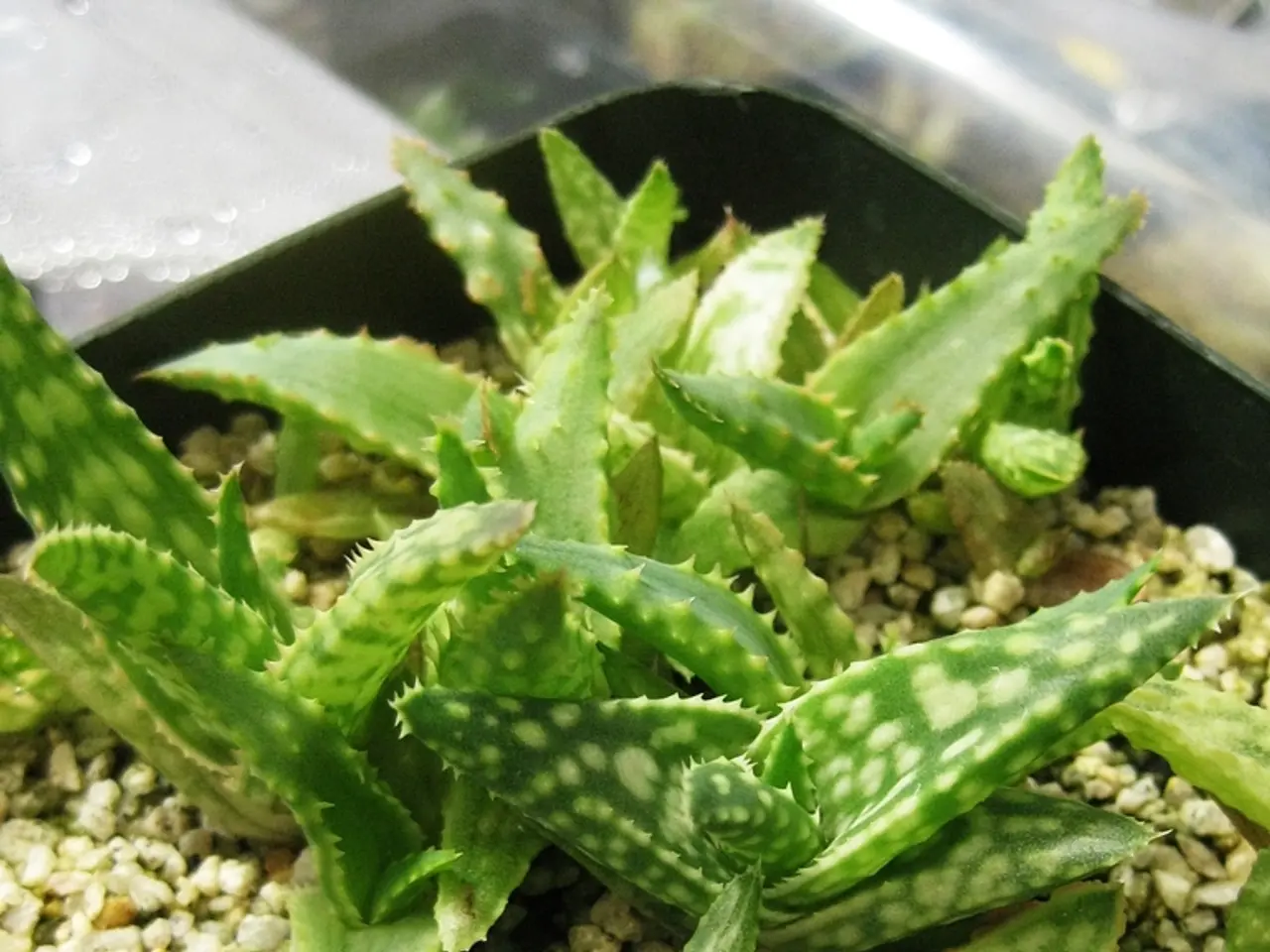Home-Friendly Aloe Varieties: A Comprehensive Guide
Aloe plants, renowned for their medicinal properties and striking appearances, are a popular choice for both indoor and outdoor gardening. Native to various regions across Africa, these succulents offer a diverse range of species, each with its unique characteristics and care requirements.
Two of the most notable species are Aloe vera and Aloe arborescens. Aloe vera, also known as Aloe barbadensis, is widely recognised for its wound healing, anti-inflammatory, and antimicrobial effects. Containing over 75 active compounds, it boosts healing and immune function, making it beneficial for skin health, digestion, and immune support [1][2][3].
Aloe arborescens, or Torch Aloe, offers similar benefits, particularly in traditional medicine for healing and soothing properties. Both species require careful consideration when it comes to light and watering to thrive [4].
Caring for these aloe plants involves providing bright, indirect sunlight, allowing soil to dry completely between watering to prevent root rot, using well-draining soil, and seasonal adjustments. Aloe vera can be grown indoors in pots or outdoors in warm climates, while Aloe arborescens prefers bright, indirect sunlight indoors and outdoors needs protection from harsh direct sun [2][4].
Beyond Aloe vera and Aloe arborescens, there are numerous other species to explore. For example, Aloe vaombe, native to Madagascar, adds a bold presence to any landscape in warm climates. Short-Leaf Aloe, native to South Africa, is ideal as ground cover, attracting pollinators with its orange blooms [6].
Aloe plicatilis, growing up to 5 feet tall, is an ideal focal point in landscaping and drought-tolerant. Van Balen's Aloe, a rare and highly ornamental species, is sought after by collectors for its unique foliage and showy flowers. Aloe cameronii, perfect for ornamental gardens, attracts pollinators like hummingbirds [7].
Each species has its specific care requirements. For instance, Short-Leaf Aloe thrives in USDA zones 9-11, requires full sun to partial shade and well-draining soil, and water sparingly. Aloe plicatilis, on the other hand, prefers mild climates and partial to full sun [6][7].
In colder months, reduce watering and consider supplemental grow lights for indoor plants. For propagation, aloe pups (offsets) can be removed and planted separately. Harvest aloe gel by cutting mature leaves, peeling the outer skin, and applying the clear gel directly on the skin or use in homemade products [2].
In summary, aloe plants are versatile medicinal succulents valued for their healing, moisturizing, and anti-inflammatory effects. Proper care involves bright light, dry conditions between watering, well-draining soil, and seasonal adjustments to keep the plants healthy and productive [1][2][3][4][5].
Incorporating aloes into home-and-garden landscaping not only enhances the lifestyle aesthetic but also provides a rich resource of medicinal benefits. To complement Aloe vera and Aloe arborescens, other species like Aloe vaombe, Short-Leaf Aloe, Aloe plicatilis, or Van Balen's Aloe are worth exploring, each with unique characteristics that cater to varying garden styles and care requirements.




